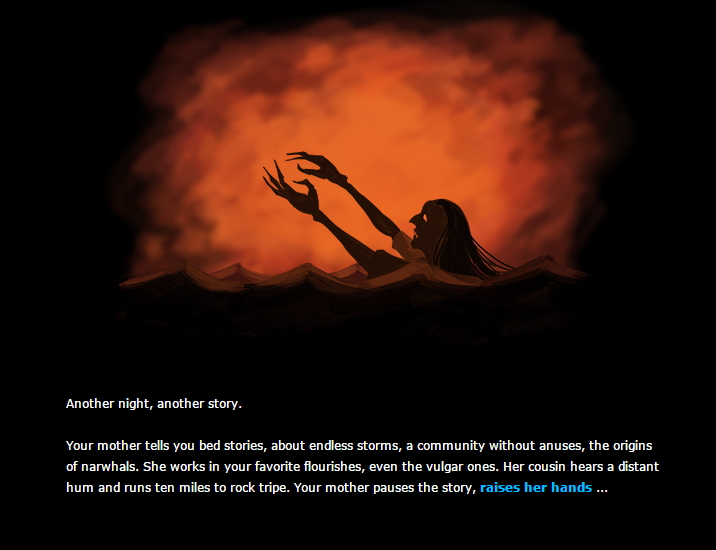Since you mostly work with Twine, I’d like to begin by asking you what you would call yourself: Do you consider yourself a writer, a game designer, a story teller – all of those things, or none of them at all?
I’ve started to call myself a narrative designer, because that title suggests a combination of systematic design and prose. I also code, direct the other artists, and a ton else, but that’s just how independent development goes.
Could you tell me more about your background? Considering that one of the piece’s focuses is on how people can rely not only on different cultural backgrounds, but also cultural backgrounds they are familiar with: do you have any Slavic or Inuit roots?
I grew up in the state of North Carolina, but I’ve lived in Arkansas ever since I got out of the military in 2010, so I’ve always lived in the South. I’m twenty-seven and a recent graduate of a college history program. I’m white, and have no Inuit or Slavic ties.




